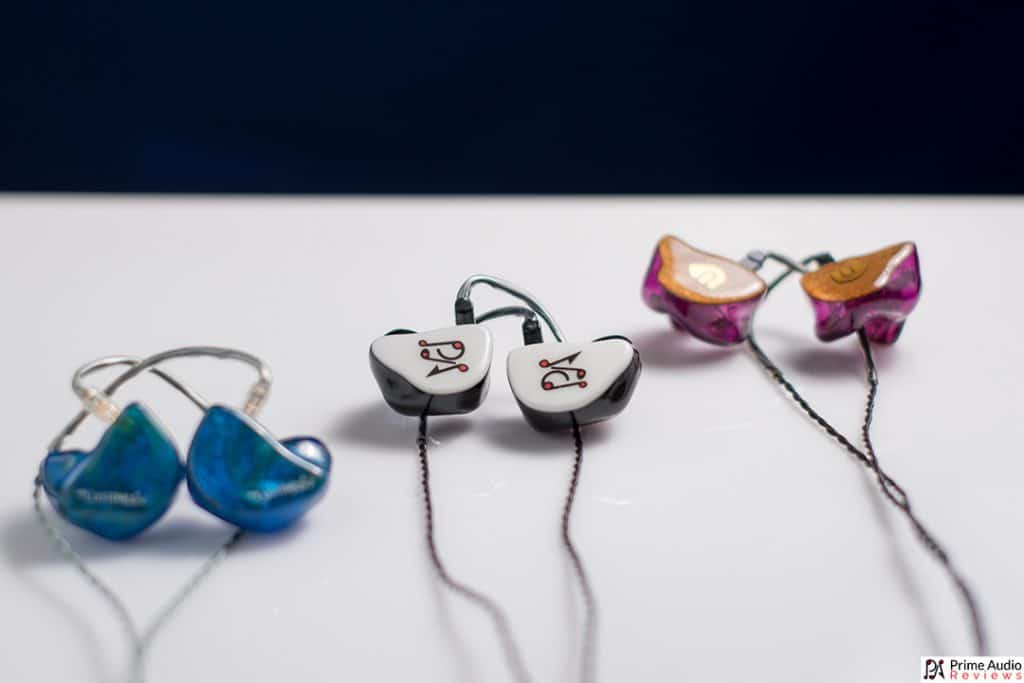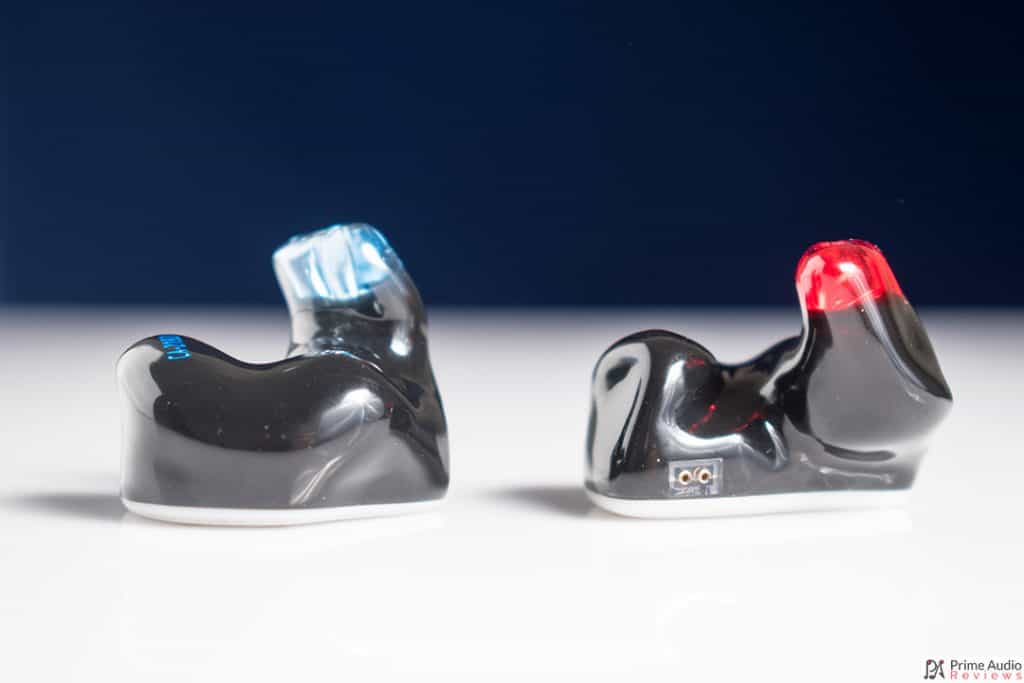A while back I reviewed the FIBAE 2 (review here) custom in-ear monitor and absolutely loved it. So when I had the chance to check out the Custom Art FIBAE 3 I jumped at it, hoping to discover the magic again. Did it deliver? Before we get into that, let’s set the scene with some background info on the company and their unique FIBAE technology.
Custom Art is a company from Poland specializing in custom in-ear monitors and since their humble beginnings, they’ve gone from strength to strength. In 2015 they developed their Flat Impedance Balanced Armature Earphone (FIBAE) technology that maintains a consistent earphone output regardless of the music source’s output impedance. You can read more about it here: https://thecustomart.com/fibae/
This sample was provided for the purpose of this review. All opinions and observations here are my own, based on my experience with the product.
- Exceptional build and fit
- Outstanding communication and support from manufacturer
- Transparency and clarity
- High quality storage case
- Competitive price
- Unique tuning may not appeal to everyone
FIBAE 3 Specifications
- Drivers: Single proprietary Sub-Low, Single proprietary Full-Range, Single High
- Sensitivity: 110dB @1kHz @0.1V
- Impedance: 7.3 Ohm @1kHz (+-0.9 Ohm 10Hz-20kHz)
- Frequency Response: 10Hz-21000Hz (+-20dB into IEC 60318-4 coupler)
- Available in: Silicone or Hollow Acrylic body
- Website: https://thecustomart.com/
- Price: 2100 PLN / €525
Package and Accessories
Just like with the F2, the FIBAE 3 arrives in a plain black box, inside which is a small zipper case and the Pelican 1010 case. Other accessories include a desiccant pellet, wax cleaning tool and a warranty card. It’s not the most luxurious packaging but it is very practical.
I love it when a CIEM comes with a serious storage case (like the PELI 1010) as well as a pocket-friendly alternative. It would be nice though to see some company branding on either the outer box or zipper case.
Build Quality and Customization
Normally when it comes to CIEM design I let the company come up with whatever design they like. This time around, however, I wanted to experience the process of ordering a custom design. Custom Art was very accommodating of my wishes and it was a simple matter of me emailing them a design and choosing the colours for everything else.
So I chose solid white faceplates with a custom logo, solid black shells, transparent sky blue left canal and transparent red right canal.
I’m very happy with the result, although in hindsight I kind of wish I had given Piotrs team full reign on the design because they have been turning out some really stunning stuff recently. But what I ended up with is unique and has special meaning to me (for obvious reasons).
You could also use the design tool on the website to come up with something that suits you. On the order page, they have a great design application that lets you browse the various colours and styles available. You can personalize almost every part of the CIEM such as the faceplate, shell colour, canal colour and logo for each side.
Just as I experienced with the FIBAE 2, the F3 arrived meticulously built with no visible imperfections, sharp edges or flaws. The Custom Art team has refined their manufacturing process over time and they’ve achieved an extremely high level of craftsmanship that is second to none.
Comfort and Noise Isolation
As far as comfort goes my FIBAE 3 is superb. This was not really a surprise because Custom Art was able to reuse the ear impressions that I had sent in for my FIBAE 2, so they are practically identical in terms of fit.
The fit, of course, relies on sending the team at CA a good set of ear impressions to work with. So if you’re placing an order it’s a good idea to print the impressions requirements from the website so your audiologist knows exactly what is required to get the best results.
Noise isolation is excellent and you won’t hear bugger all external noise when you’re listening to music. The isolation isn’t quite as good as the M-Fidelity SA-50, which has solid shells compared to the FIBAE 3’s hollow shells. The FIEBAE 3 does isolate better than the Empire Ears Bravado though, which also has hollow shells but has a thinner resin casing.
Sound
What struck me first and foremost was the prominence of vocals in the FIBAE 3’s presentation. Indeed the vocals and midrange, in general, get a whole lot of love here. That’s not to say the lows and highs are lacking in any way; instead, they’re positioned to act as the platter for which the midrange is served on.
There’s a lot of clarity and detail to be found in the FIBAE 3 presentation. This is partly enabled by the lean notes and fast attack of the mids, somewhat brighter treble and modest levels of mid-bass. The end result is a detailed mid-centric sound that is more aggressive in the top end than the FIBAE 2 but manages to maintain the non-fatiguing smoothness that I’ve come to expect from a Custom Art IEM.
Surprisingly, the FIBAE 3 still has some warmth to it and does not sound at all sterile or analytical. This largely comes from the healthy dose of lower and sub-bass that handily counterbalances the brightness of the treble.
Bass
The FIBAE 3 presents the upper-bass in a quite subdued fashion and in only just above neutral levels. It is very tight and characterized by its excellent texture. As you go further down the scale the bass becomes more weighted and fills out really nicely by the time you get to the sub-bass.
The bass has great focus, highlighting the space between separate bass elements. Lower bass notes have a physical rumble that you can feel resonating through the resin shells, which is always highly satisfying. Ultimately though, it’s the tight control and modest levels of bass and upper bass in particular that allows the FIBAE 3 to maintain it’s exuberant midrange clarity.
Mids
Vocal lovers will surely appreciate the midrange that the FIBAE 3 lays down. Male and female vocals alike are forward, intelligible and smooth with a good amount of body. The instrument separation is truly impressive for a triple driver IEM and that coupled with a subtle upper midrange boost gives the FIBAE 3 loads of detail and transparency.
You might think that with the amount of air between elements and the subsequent blackness of the background, the FIBAE 3 might suffer from sharp notes or an unnaturally fast decay. However, this is not the case. The mids are snappy but remain smooth with an undertone of warmth throughout. There’s not a hint of sibilance or harshness whatsoever.
Anathema’s “Close Your Eyes“, which for the first two-thirds of the song consists entirely of midrange elements sounds incredibly pleasing on the FIBAE 3. The timbre of the vocals, piano and string instruments is outstanding.
Treble
A crisp, clear treble exudes from the top end but with the same lush smoothness found in the FIBAE 2. However, the emphasis on the F3 is in the upper ranges of the treble which extends farther than that of its dual-driver predecessor.
The transition from the lower to upper treble is smooth without any noticeable peaks and mercifully no stridency either. Piotr has done an absolutely brilliant job here with tuning the FIBAE 3’s treble, giving it sparkle and spirit while also being non-fatiguing enough that I can listen for hours on end with no issue whatsoever.
Soundstage
The FIBAE 3 paints a soundstage that has some serious depth to it. It can be fairly intimate, especially when there are vocals present. But it really feels like a palpable space that’s rounded rather than elongated like so many IEMs portray.
The exemplary instrument separation and layering come into play here, with individual elements emerging out of the black background with a strong focus and lucid imaging.
Comparisons
Custom Art FIBAE 2 (475 EUR)
Although the FIBAE 2 shares some characteristics with the FIBAE 3, they are two different beasts. While the FIBAE 2 is unabashedly fun and a little party animal the FIBAE 3 takes a more technical approach. So the former compromises some transparency and detail in favour of having a stomping good time. Meanwhile, the latter wears more of a poker-face, preferring clarity and absolute control.
In terms of soundstage, I find the FIBAE 2 to be a little wider but with less depth. The FIBAE 3, on the other hand, has a rounder stage but at times feels more intimate because of the forwardness of its vocal presentation.
The amount of perceived bass is greater on the FIBAE 2 but actually, it and the FIBAE 3 share a similar quantity. This is due to the V-shaped signature of the FIBAE 2 that brings the bass more forward and pushes the midrange further back. On top of that, the FIBAE 2 has thicker bass notes which in turn, give it an overall warmer tonality.
The FIBAE 3, on the other hand, has greater bass definition and favours the sub-bass more whilst the FIBAE 2’s bass is more linear from its sub to upper regions.
When it comes to the midrange, the FIBAE 2 lacks the black background and separation of the FIBAE 3. It’s not as resolving or detailed, nor does it bring vocals forward as much as the FIBAE 3. It’s here more than the other ranges that the FIBAE 3’s extra driver takes things to another level of technicality and precision. The FIBAE 2 drives forth an emotional wave of midrange juiciness while the FIBAE 3 dissects everything and hands it to you piece by piece.
The FIBAE 3’s more accentuated upper treble has a real airiness to it where the FIBAE 2 is a little wetter and more sturdy in comparison. Treble on the FIBAE 3 has more prominence than the FIBAE 2, lending to the former’s brighter tonality.
Inearz Audio Fusion ($726 USD)
This 6-driver CIEM has a much warmer tonality than the FIBAE 3. The Fusion has a bass-strong signature with a rich midrange and clear but laid-back treble response. It presents a wall of sound that is less resolving and more congested despite it having double the driver count of the FIBAE 3.
There’s some serious impact in the Fusion’s mid-bass, with thick, weighted notes that make it feel a bit sluggish and clumsy compared to the FIBAE 3’s nimbleness. The boosted mid-bass gives the sound a bloated sensation and colours the lower midrange considerably.
The Fusion’s midrange lacks the transparency and clarity that the FIBAE 3 has in spades. Listening to them side by side the former seems muddy by comparison.
Another area where these two monitors differ greatly is in their treble. The Fusion has a very relaxed treble that lacks definition and sparkle. It makes it very smooth up top but it also means that there’s a lack of overall clarity. In contrast, the FIBAE 3 has clarity for days and it takes a good deal of time for my ears to adjust when I switch between these two very different CIEMs.

FIBAE 3 Conclusion
The FIBAE 3 has a unique and interesting signature that leans toward reference but is still very musical at heart. Once again Custom Art has proven you don’t need a gazillion drivers to make great sound. I’m left intensely impressed by their tuning finesse.
When it comes to instrument separation and space between elements the FIBAE 3 has it in spades. There’s an abundance of detail in a presentation that in no way comes across as clinical or dry. On the contrary, the FIBAE 3 has a liquidity like a sweet nectar. The FIBAE range really is the sweet spot for value in custom in-ears right now and this is another model I heartily recommend.








